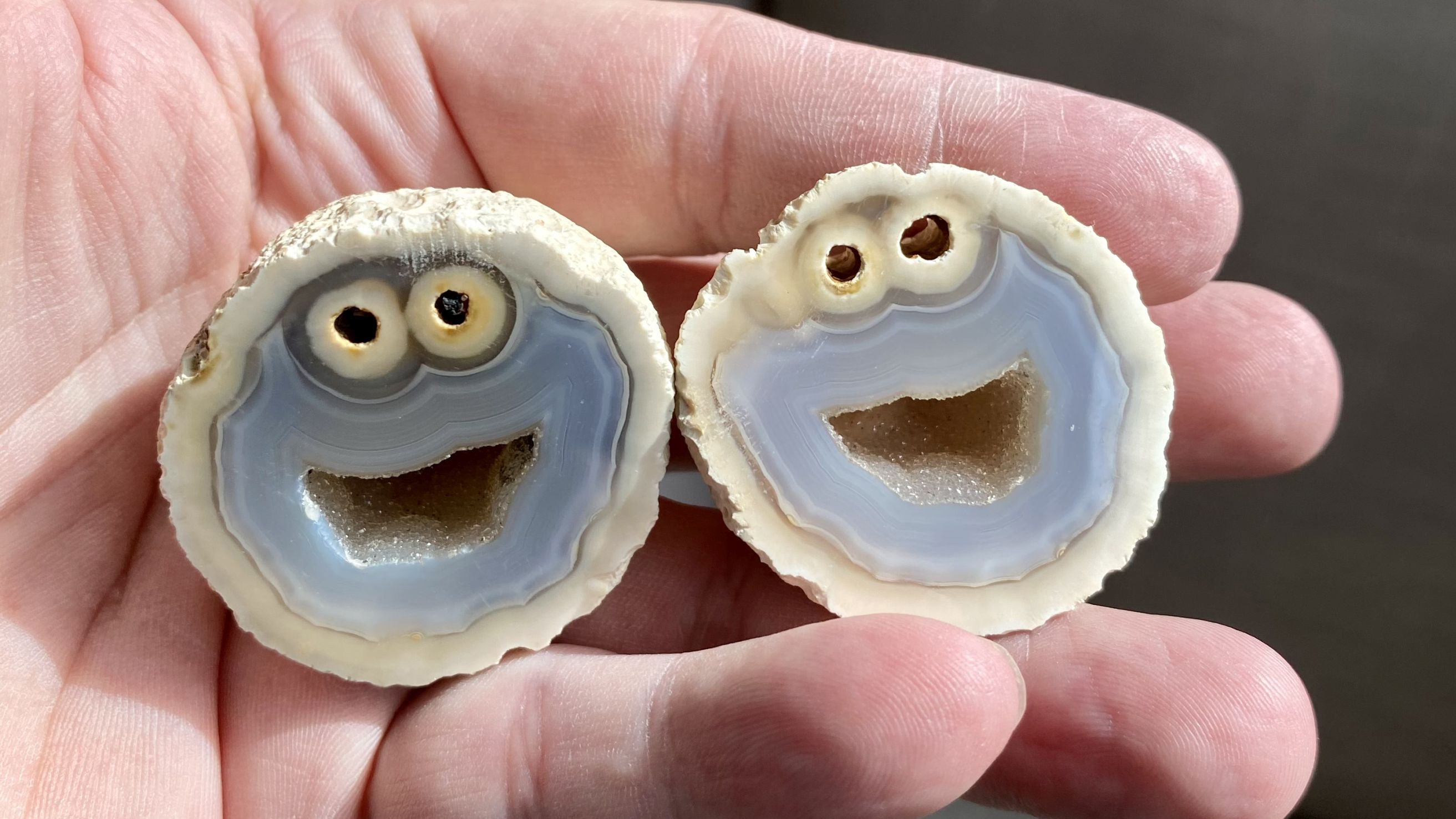Rock collector finds rare gemstone that looks like Cookie Monster
Mother Nature must be a fan of Sesame Street.

You never know what you're going to get when you crack open a geode-like rock called an agate, but a new specimen is even more surprising than usual: It looks just like Cookie Monster.
The agate, found in Soledade, a precious stone hotspot in southern Brazil, is a dead ringer for the blue, googly-eyed Sesame Street Muppet. After its owner, California mineral collector Mike Bowers, posted about the agate on Facebook, it went viral, with write-ups in newspapers from Australia to Israel to the United States.
"I didn't realize that Cookie Monster was so well known and part of the world cultural heritage!" Bowers told Live Science. He's since been contacted by the actor who plays Cookie Monster on "Sesame Street," he said. (Cookie Monster's official Twitter account also gave the agate a shout-out.)
Related: Photos: The world's 6 most famous rocks
Incredible Earth: $22.99 at Magazines Direct
The planet we live on is a remarkable place. But have you ever wondered how or why these things occur? How the Earth was made? How we predict the weather? How fossils form? What causes earthquakes or which animals glow in the dark? "Incredible Earth" reveals answers to these questions and more on a thrilling journey through everything you need to know about our world — and with gorgeous photography and insightful diagrams along the way!
The agate came to Bowers in November via Brazilian gemologist Lucas Fassari, who had acquired it in a batch of many agates from Soledade. Bowers immediately purchased the Cookie Monster agate, but didn't post it online until Jan. 16, as he was ill with COVID-19.
Agates are a form of quartz, the crystalline form of silicon dioxide, that develop within cavities in volcanic rocks. The cavities are formed by gas bubbles in hot lava. Over time, as the lava cools, water infused with silicon dioxide percolates through the cavities. As the water evaporates, the silicon dioxide is left behind on the cavity walls, creating colorful layers of crystals. The colors are caused by chemical impurities in the silicon dioxide and by the spacing of the crystals.
Some agates completely fill their volcanic voids, but many leave small spaces inside, lined with sparkly, inward-facing quartz crystals. In the case of the Cookie Monster agate, these voids just happen to look like a pair of Muppet eyes and an enthusiastically grinning mouth.
Get the world’s most fascinating discoveries delivered straight to your inbox.
"It is somewhat uncommon to find a face shape in agates, but in many instances it's like looking at the clouds. You kind of see a face," Bowers said. "What makes the Cookie Monster unique is there is just no doubt: Clear-cut, it is Cookie Monster, no explanation required."
Another unique feature of the Cookie Monster agate is that the face appears on both sides of the cut stone, Bowers added. Usually the voids are not lined up so neatly as to create a mirror image.
For now, Bowers said, he plans to keep the stone. It may eventually end up in a museum or in the hands of a high-end collector, he said.
"It is totally unique and awesome to see everyone loving this stone as much as we do," he said.
Originally published on Live Science.

Stephanie Pappas is a contributing writer for Live Science, covering topics ranging from geoscience to archaeology to the human brain and behavior. She was previously a senior writer for Live Science but is now a freelancer based in Denver, Colorado, and regularly contributes to Scientific American and The Monitor, the monthly magazine of the American Psychological Association. Stephanie received a bachelor's degree in psychology from the University of South Carolina and a graduate certificate in science communication from the University of California, Santa Cruz.




